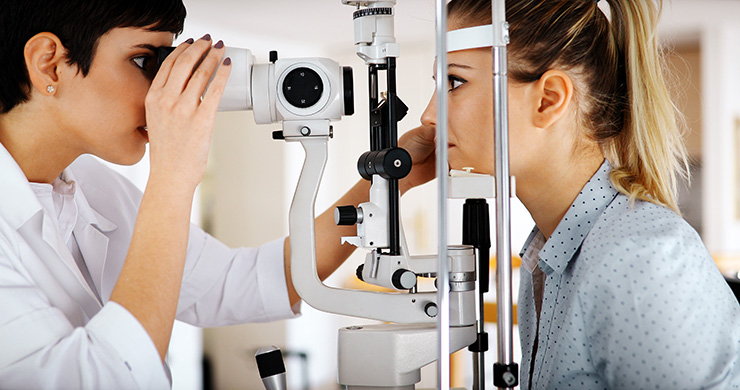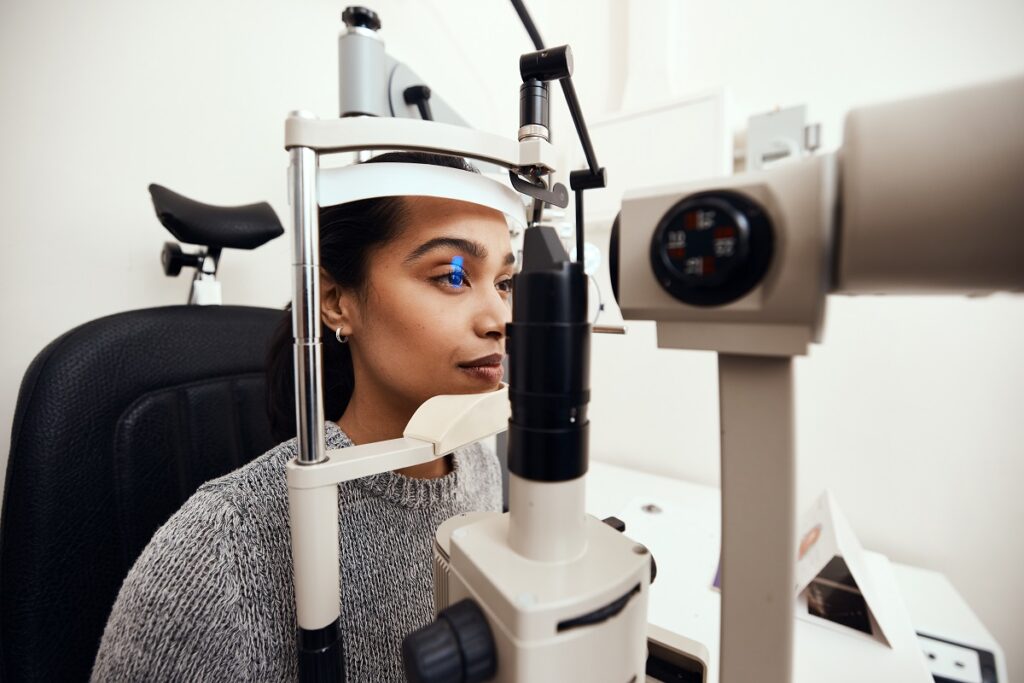Just How an Eye Doctor Can Help Prevent Vision Complications in Chino
Just How an Eye Doctor Can Help Prevent Vision Complications in Chino
Blog Article
Checking Out the most up to date Technical Advancements in Optometry and What They Mean for Optometrists
From the accuracy of Optical Coherence Tomography to the nuanced understandings offered by AI-driven analysis devices, these technologies are setting new criteria in person assessment and therapy. As these advancements penetrate the practice, eye doctors are encountered with the difficulty of embracing these devices to enhance patient end results.
Developments in Diagnostic Equipment
Advancing the field of optometry, innovations in diagnostic tools have actually reinvented the means eye treatment professionals evaluate and detect ocular conditions and visual disabilities. The past decade has actually witnessed significant technological advancements, allowing even more detailed and accurate examinations. Optical Comprehensibility Tomography (OCT), for instance, gives high-resolution cross-sectional photos of the retina, permitting for the very early discovery of illness such as glaucoma and age-related macular deterioration. This non-invasive imaging method has become important in modern optometric technique.
Another secret innovation is the intro of advanced corneal topography systems, which map the surface area curvature of the cornea with precision. These tools are specifically useful for fitting call lenses and detecting corneal problems. Electronic retinal imaging has actually transformed standard ophthalmoscopy, providing detailed, breathtaking views of the retina that facilitate detailed aesthetic exams.
The growth of wavefront aberrometry has actually also been critical, allowing the analysis of refractive mistakes with unmatched precision (Opticore Optometry). This innovation helps in tailoring corrective lenses and enhancing surgical outcomes for refractive surgical treatments. Jointly, these analysis developments encourage eye doctors to supply exceptional person treatment, ensuring early treatment and customized therapy approaches, inevitably enhancing visual wellness end results
AI in Person Monitoring
Structure on the structure of cutting-edge diagnostic tools, the unification of synthetic intelligence (AI) in person monitoring represents a transformative jump for optometry. AI systems are significantly employed to improve performance, accuracy, and personalization in individual care. By assessing huge quantities of information, AI can recognize patterns and anticipate possible ocular conditions, enabling optometrists to customize interventions a lot more effectively. This capacity is crucial in taking care of persistent eye illness such as glaucoma and diabetic retinopathy, where very early discovery and continuous monitoring are vital.
Additionally, AI-driven systems assist in streamlined individual interactions and administrative procedures. Automated scheduling, online examinations, and personalized follow-up strategies not only boost individual fulfillment but likewise optimize time administration for specialists. These systems can triage patients based upon the urgency of their conditions, ensuring that those in crucial demand get punctual interest.
Additionally, AI enhances decision-making by supplying eye doctors with evidence-based referrals and treatment paths. By integrating information from digital wellness documents, AI devices use insights that educate scientific decisions, reducing the threat of mistakes and boosting client outcomes. As AI remains to develop, its duty in client management will likely increase, reshaping the landscape of optometric care.
Advances in Retinal Imaging
In the world of optometry, retinal imaging has seen exceptional technical innovations that are enhancing diagnostic capabilities and client care. Developments such as Optical Coherence Tomography (OCT) and fundus digital photography have reinvented just how eye doctors visualize and assess the retina. OCT, specifically, provides high-resolution, cross-sectional photos of the retina, enabling the thorough examination of its layers. This capacity is vital for early discovery and monitoring of problems like glaucoma, diabetic person retinopathy, and age-related macular deterioration.
Boosted imaging methods like OCT angiography are further refining analysis accuracy. This non-invasive method maps blood flow in the retina, offering crucial insights into vascular health and wellness without the need for dye injections. Furthermore, adaptive optics innovation is being incorporated into retinal imaging systems to remedy eye aberrations, supplying unprecedented photo clarity. Such improvements moved here help with the recognition of minute retinal modifications that can represent condition progression.
Additionally, advancements in fabricated intelligence are boosting retinal imaging by allowing computerized evaluation of big datasets. These systems assist optometrists in recognizing patterns a measure of pathology, thereby boosting analysis accuracy and performance. Jointly, these innovations are transforming retinal imaging right into a foundation of modern-day eye care, enhancing results and increasing restorative opportunities.
Teleoptometry's Growing Duty
Teleoptometry is progressively becoming an important part of eye treatment, driven by innovations in digital interaction and analysis tools. This is specifically helpful in underserved and rural locations where access to specialized eye care is commonly limited.
The assimilation of fabricated knowledge (AI) further boosts teleoptometry, allowing the analysis of aesthetic information and aiding in the discovery of ocular problems such as glaucoma and diabetic person retinopathy. AI-powered algorithms can swiftly translate complex imaging information, providing eye doctors with useful insights that reinforce professional decision-making.
Furthermore, teleoptometry sustains connection of treatment via smooth assimilation with digital health and wellness documents (EHRs), allowing eye doctors to keep comprehensive person histories. When seeking advice from with different practitioners., this makes certain that clients obtain constant and customized treatment even.
In spite of these advantages, obstacles stay, including making certain information safety and security and taking care of client assumptions. Teleoptometry stands for a considerable stride in the direction of even more accessible, effective, and patient-centered eye care. As innovation advances, its role is poised to expand additionally.

Future Patterns in Eye Treatment
A myriad of innovative fads is established to improve the future of eye treatment, driven by technical improvements and the progressing demands of individuals. One considerable pattern is the combination of synthetic intelligence (AI) in diagnostics, which promises to boost the accuracy and performance of eye examinations. AI algorithms can analyze vast amounts of information from retinal pictures, potentially finding problems anchor like diabetic retinopathy and glaucoma earlier than standard approaches.
In addition, tailored medication is getting traction in optometry, with hereditary screening informing customized therapy plans. This strategy intends to enhance client outcomes by customizing interventions to individual hereditary profiles. Wearable technology, such as smart call lenses, is likewise on the horizon, offering real-time surveillance of intraocular stress or sugar degrees, therefore offering constant insights right into systemic and eye health and wellness.
The adoption of augmented reality (AR) and digital reality (VIRTUAL REALITY) in training and client education is one more emerging pattern. These innovations provide immersive experiences that can enhance understanding and abilities both for eye doctors and individuals. As these trends develop, optometrists have to remain abreast of technological developments to offer cutting-edge care, guaranteeing enhanced client outcomes and contentment in the vibrant landscape of eye care.
Conclusion

Jointly, these diagnostic innovations encourage optometrists to provide remarkable person care, making sure early intervention try this web-site and customized treatment techniques, ultimately enhancing visual wellness results.

As these innovations continue to develop, optometrists should adjust and integrate them into technique, ultimately enhancing operations efficiency and raising the requirement of eye care provided to clients.
Report this page